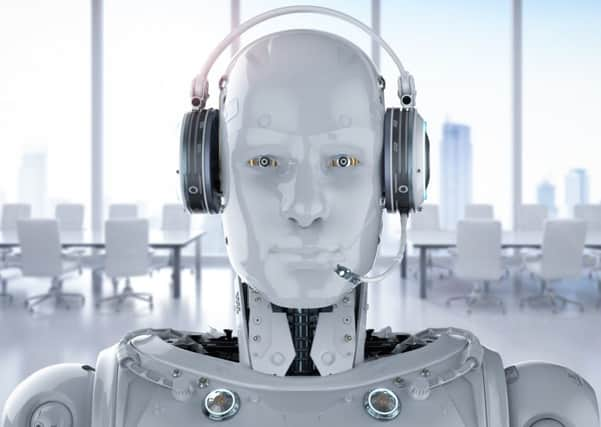Kate Cooper: How to harness the fourth industrial revolution


We are now seeing a transition into the fourth industrial revolution, where the expansion of technologies in the workplace and across society is creating unprecedented possibilities: driverless cars, human enhancement, personalised shopping experiences influenced by data and our domestic lives seamlessly interconnected by the internet of things; it’s a world away from our once rural existence.
The potential of this technology is huge, and it is already having an incredible impact on the way we run our businesses. We can now make more intelligent choices with data and take decisions more quickly.
Advertisement
Hide AdAdvertisement
Hide AdFor example, a customer-facing department can give bespoke responses to online queries using voice recognition. This is giving businesses huge gains in productivity and freeing up workers’ time, while making sure the customer is still being looked after individually.
Similarly, professional services businesses are using artificial intelligence (AI) to determine which staff should be selected to work on a project, identifying and avoiding any risk of bias from a race, gender or age perspective.
The real challenge for businesses is to explore, understand and work out how to respond to the trends, forces and ideas that could shape the future. It is crucial to understand how these developments might interact with each other, to predict the impact this coalescence might have on an individual sector or business. There is a lot of investigation into technology which can provide information on when we concentrate best, or when our physical performance peaks, all designed to drive for greater efficiency in the workplace.
Having an open mind is key. We need to think about all the possibilities, consider how we could take advantage of the opportunities presented, deal with emerging risks and then explore different scenarios to see if it changes our view. If the use of technology is likely to create a significant impact, then now is the time to diversify – think about what you are able to do as a business and what you can offer your customers of the future by embracing that technology.
While technology will always be a catalyst for change, businesses will always need their human capital – how often do we hear the phrase “our people are our greatest asset”? People will always be needed, for the foreseeable future at least, to provide the emotional intelligence that humans alone bring to situations. The relationships that people form are often the key to running a successful business. We all need great people to work with us, people who can learn, embrace new and different ways of working, and bring innovation and the fun of human interaction to the workplace. These are all human qualities that even the most disruptive of technologies are still generations away from being able to master.
There have been periods in history when businesses have faced new technology that has made jobs disappear, and this will continue to happen. However, in the late 20th century commentators were predicting that we would, by now, have little work to do as so much would be done by machines. This has not come to pass; new roles have emerged and people have learnt new skills to enable them to take these opportunities. The impact of technological change will vary from industry to industry but we are still a long way from the organisation managed solely by AI.
All types and size of businesses need to take advantage of the potential that these exciting and emerging technologies can bring to their current and near-future operations. Keeping up to date with technology helps you know when to adapt or diversify, but developing people that are willing to learn, ensuring development opportunities are available to all, is the best way of future-proofing your organisation.
Kate Cooper is head of research, policy and standards at the Institute of Leadership & Management, a world-renowned specialist membership body that raises professional standards of more than 30,000 leaders, managers, coaches and mentors. www.institutelm.com